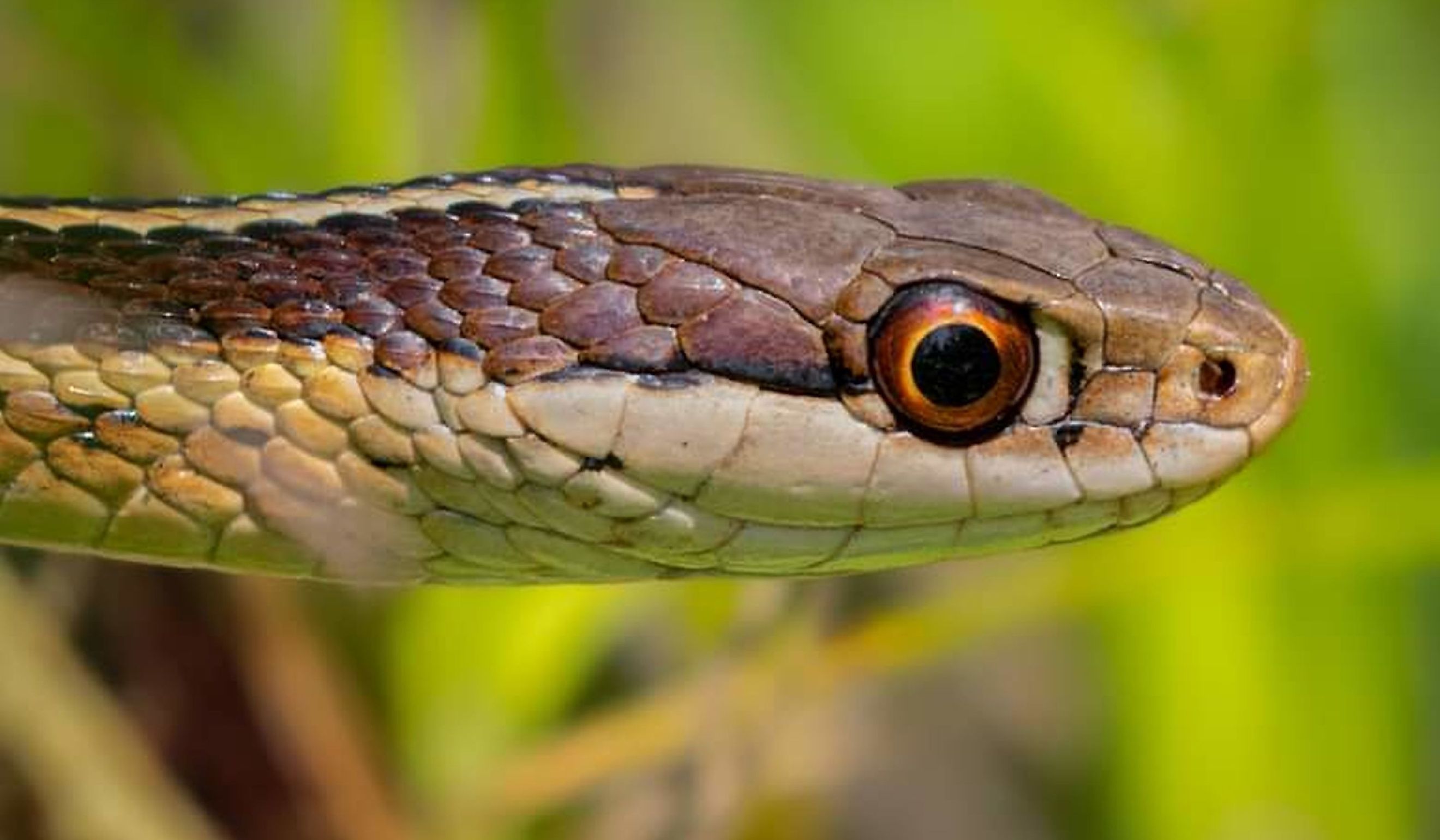
The Most Snake Infested Lakes in Delaware
Delaware, known for its scenic waterways and lush landscapes, is home to several lakes that attract a variety of wildlife, including numerous snake species. While encountering snakes in these lakes is not uncommon, understanding their habitats and behaviors can enhance both the appreciation and caution visitors should exercise when enjoying Delaware’s natural beauty. Here’s an in-depth look at some of the most snake-infested lakes in Delaware, along with a deeper dive into their geography.
Lums Pond
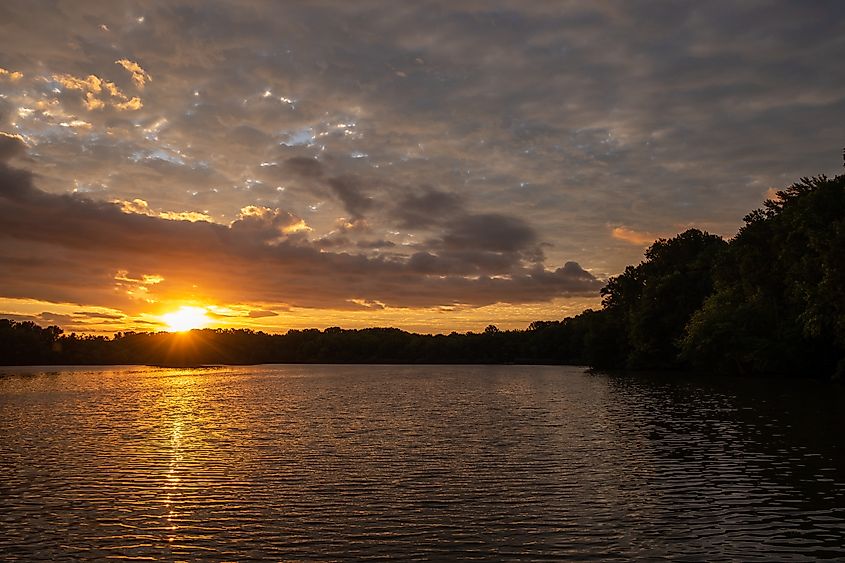
Lums Pond, located in Lums Pond State Park in New Castle County, is Delaware's largest freshwater pond, covering 200 acres. This expansive body of water was originally a millpond created by damming St. Georges Creek. The pond is surrounded by a diverse landscape that includes wooded areas, wetlands, and open fields. This variety of habitats supports a rich biodiversity, including numerous snake species.
Lums Pond includes several small islands and inlets, which provide ideal basking spots and hunting grounds for northern water snakes. These snakes thrive in the pond's calm, shallow waters where fish and amphibians are plentiful. The surrounding forests and wetlands offer ample cover and hunting grounds, making Lums Pond a hotspot for snake activity.
Northern water snakes are attracted to Lums Pond due to its abundant fish and amphibian populations, which provide ample food sources. Visitors should be cautious when exploring the shoreline and avoid disturbing these reptiles. Despite their defensive nature, northern water snakes play a crucial role in controlling the local fish and amphibian populations.
2. Trap Pond
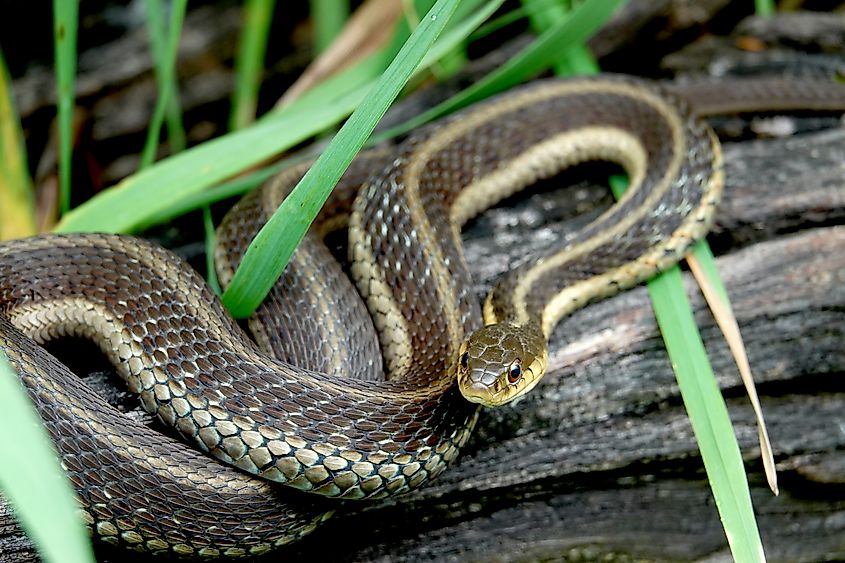
Trap Pond, situated in Trap Pond State Park in Sussex County, is notable for its cypress swamp, which is the northernmost naturally occurring stand of bald cypress trees in the United States. The pond itself is about 90 acres, and the surrounding park includes over 3,800 acres of forested wetlands.
Trap Pond is characterized by its dense cypress swamps and a network of water channels that create a unique and rich ecosystem. This environment is perfect for snakes, particularly the northern water snake and the eastern garter snake. The cypress knees (the distinctive root structures of bald cypress trees) provide excellent hiding and basking spots for these reptiles.
The eastern garter snake is one of the most common snakes in Delaware and is frequently seen around Trap Pond. These snakes are usually found in moist environments and are easily recognizable by their distinctive stripes running the length of their bodies. They are non-venomous and pose no threat to humans, but they are vital in controlling insect and amphibian populations.
3. Silver Lake
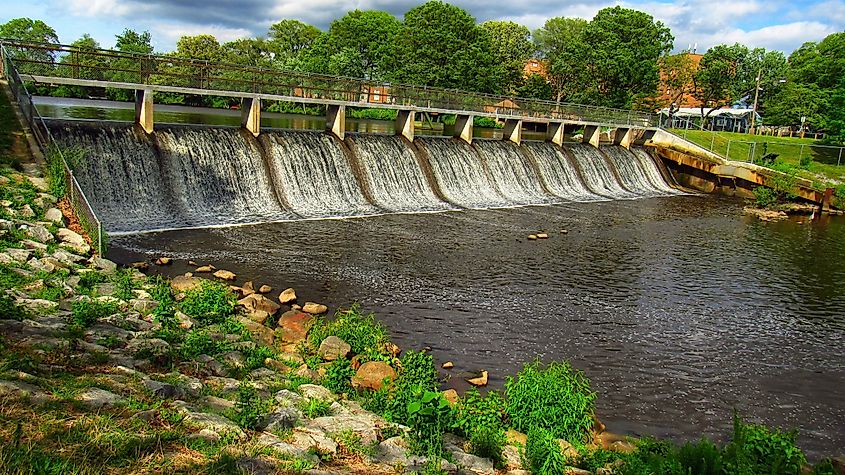
Silver Lake in Dover, the state capital, is an urban lake that spans about 167 acres. It is surrounded by parks, residential areas, and city infrastructure, making it a unique environment where wildlife coexists with urban development. The lake is fed by the St. Jones River, and its shores are lined with trees and vegetation that provide habitat for various species, including snakes.
Silver Lake includes a mix of natural and man-made features. The northern water snake is commonly seen here, often basking on rocks or logs along the shoreline. The lake's urban setting makes snake encounters more common, especially around parks and recreational areas. The eastern kingsnake is another resident, occasionally seen in the more wooded parts of the lake's surroundings.
The eastern kingsnake is a beneficial species known for its role in controlling rodents and other snake populations, including venomous snakes. These snakes are non-venomous and relatively docile, making them less likely to pose a threat to humans. However, their presence indicates a healthy ecosystem, as they help maintain the balance by preying on potentially harmful species.
4. Garrisons Lake
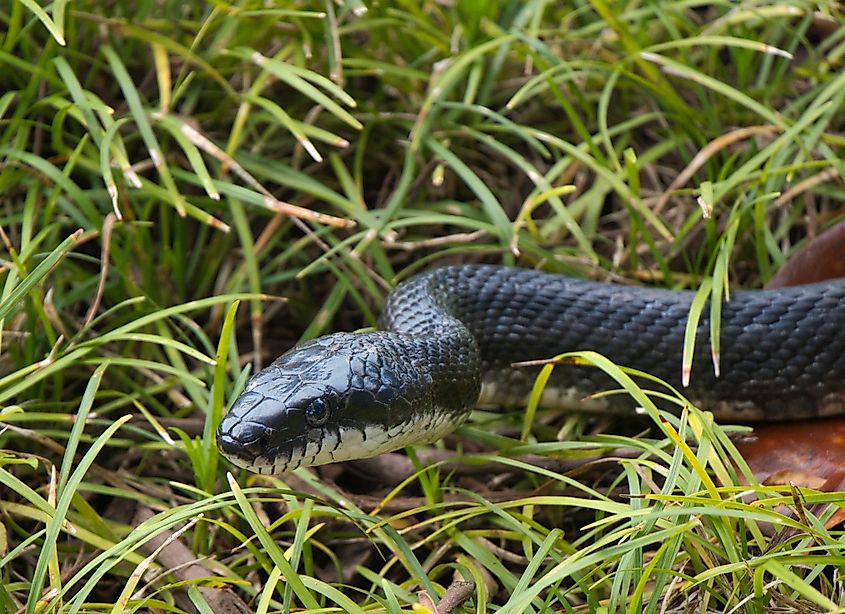
Located in Kent County, Garrisons Lake is a popular spot for fishing and boating. The lake covers about 86 acres and is surrounded by wetlands and agricultural land. The lake is fed by several small streams, which create a variety of habitats along its shores.
Garrisons Lake includes marshy areas and dense vegetation that provide ideal habitats for northern water snakes, eastern garter snakes, and eastern rat snakes. The wetlands are particularly attractive to these snakes due to the abundance of prey and the availability of cover from predators.
Eastern rat snakes are large, non-venomous constrictors that are excellent climbers and swimmers. They are often found in trees near the water or foraging in the underbrush. These snakes help control rodent populations and are an important part of the ecosystem. Visitors to Garrisons Lake should be aware of their surroundings and respect the natural habitat of these reptiles.
5. Red Mill Pond
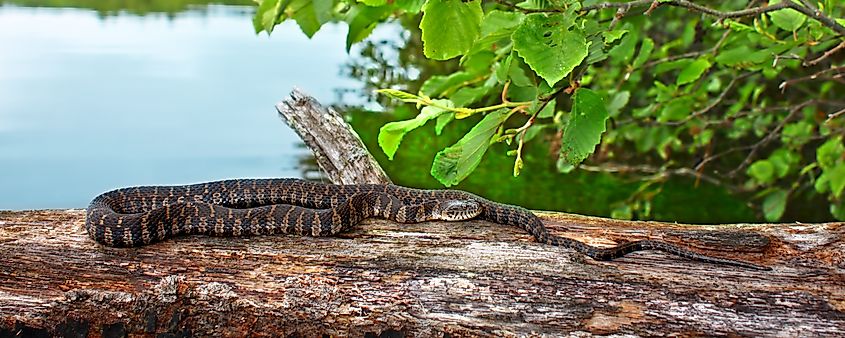
Red Mill Pond, located near Lewes, is a 179-acre pond known for its shallow waters and surrounding wetlands. This large pond is fed by Love Creek and is a popular spot for boating, fishing, and bird watching. The pond’s rich biodiversity supports a variety of wildlife, including numerous amphibians and small mammals, which in turn attract snakes.
Red Mill Pond features expansive wetlands and marshy areas that create an ideal environment for snakes. The northern water snake and eastern ribbon snake are common here, often seen along the water's edge or basking in vegetation.
The diverse habitats around Red Mill Pond also support the presence of the eastern ribbon snake, a slender, fast-moving snake often found near water. These snakes are non-venomous and feed on small fish and amphibians. They are shy and more likely to flee than confront humans, making encounters relatively harmless.
Safety Tips for Encountering Snakes
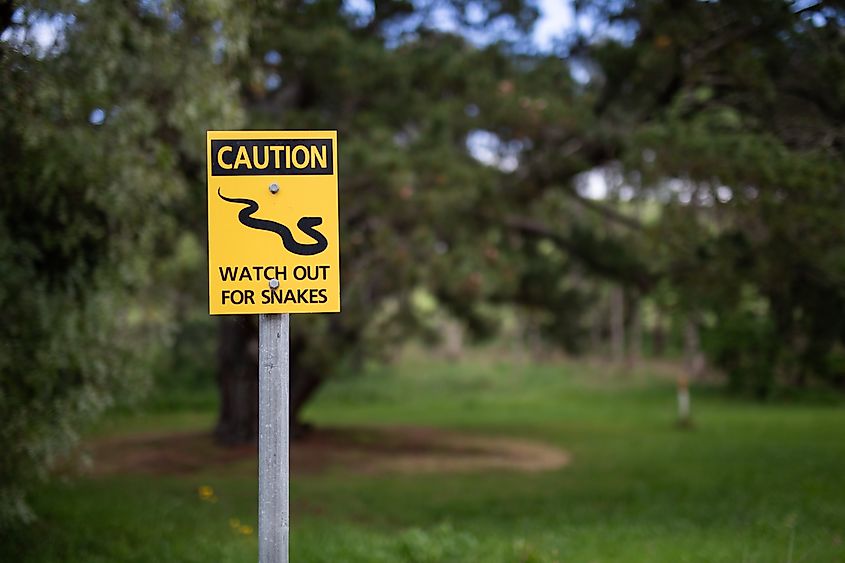
While Delaware’s lakes offer beautiful natural environments for recreation, it is important to exercise caution when exploring these areas, especially where snakes are known to be prevalent. Here are some safety tips to keep in mind:
1. Stay on Designated Trails: When hiking or walking near lakes, stick to marked paths to reduce the likelihood of encountering snakes in their natural habitats.
2. Watch Where You Step: Be mindful of where you place your feet, especially near water, tall grass, or underbrush where snakes may be hiding.
3. Do Not Disturb Wildlife: Snakes will generally avoid human interaction unless provoked. Avoid handling or disturbing snakes if you come across them.
4. Wear Appropriate Footwear: Sturdy, closed-toe shoes can provide protection against accidental snake bites.
5. Educate Yourself: Learn to identify the common snake species in the area and understand their behaviors. Knowing which snakes are venomous can help you react appropriately in an encounter.
6. Keep Pets on Leashes: Pets can be curious and may disturb snakes. Keeping them on a leash helps protect both your pet and the wildlife.
The Importance of Snakes in the Ecosystem
Snakes play a vital role in maintaining the health of ecosystems. They help control populations of pests, such as rodents and insects, and serve as prey for larger predators. Understanding and respecting the presence of snakes in Delaware’s lakes can enhance your appreciation for these remarkable reptiles and the roles they play in nature.
While the idea of snake-infested lakes might be daunting to some, these areas are integral to the biodiversity and ecological balance of Delaware’s natural landscapes. By taking proper precautions and fostering a respectful attitude towards wildlife, visitors can safely enjoy the beauty and tranquility of these lakes while coexisting with their reptilian residents.
Delaware’s lakes, such as Lums Pond, Trap Pond, Silver Lake, Garrisons Lake, and Red Mill Pond, are not only beautiful recreational spots but also vital habitats for various snake species. Understanding the types of snakes present and their behaviors can help ensure safe and enjoyable experiences for all visitors. By respecting these natural habitats and following safety guidelines, you can appreciate the unique biodiversity of Delaware’s lakes while minimizing the risk of snake encounters.











